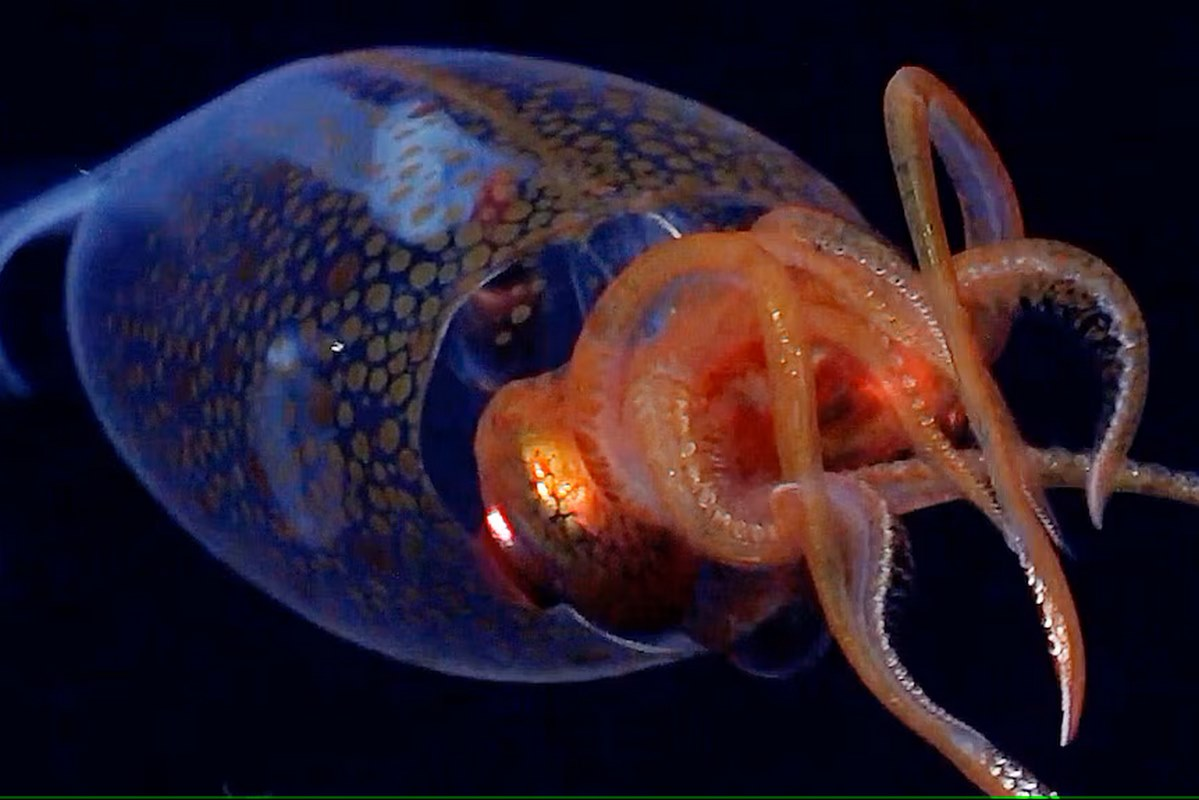Rapid Fire
Colossal Squid
- 26 Apr 2025
- 2 min read
Researchers captured the first ever image of a live colossal squid (Mesonychoteuthis hamiltoni) at a depth of 2,000 feet.
Colossal Squid
- About: Colossal Squid are the largest known invertebrate on Earth, belong to class Cephalopoda and family Cranchiidae.
- Habitat: Found circumpolar around Antarctica, it inhabits the Southern Ocean mesopelagic (200–1000 m) to bathypelagic (1000–4000 m) zones.
- They are not commercially fished.
- Biological Characteristics: Adults grow up to 14 m and weigh approx 500 kg, with females being larger. Despite its size, it is soft-bodied and boneless.
- Its massive eyes, the largest in the animal kingdom, aid deep-sea vision.
- Tentacles bear powerful swivelling hooks for prey capture and defense. Juveniles are semi-transparent, adults are reddish or purplish with muscular bodies.
- It reproduces via internal fertilization, though mating behaviors remain unknown.
- Feeding: It is a deep-sea predator and feeds on large fish like the Patagonian toothfish and other squids.
- It is preyed upon by sperm whales, juveniles by seals and marine predators.
- IUCN Status: Least Concern.
- Comparison with Giant Squid (Architeuthis dux): Giant squids are longer with slender limbs and more robust.
- Both are among the largest invertebrates, serving as apex predators and key prey for sperm whales.
| Read More: Coelacanth |





